Showing 21-36 of 36 results

Grassland Restoration in the Desert Southwest
Early settlers’ descriptions of southeast Arizona told of uninterrupted grassland stretching from one mountain range to another. That’s changed. Today much of that land has been invaded by mesquite and other woody shrubs and the ecological services provided by the grassland – including water recharge into the underground aquifers – has been diminished. One reason […]
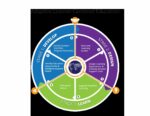
Creating Community Partnerships to Improve Oregon Pest Management
A few recent IPM extension projects in Oregon didn’t begin the way so many extension efforts do. They didn’t start with a workshop. They didn’t start with a field day. They didn’t start with teaching or any sort of telling. They started with a question. “We’d ask, ‘If Oregon State University was doing all the […]
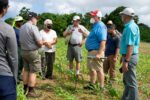
Getting the Diagnosis Right: Guam Workshop Focuses on Foliar Fungal Diseases
In farming, as in medicine, an accurate diagnosis is critical. For a doctor to prescribe the correct treatment, they need to know the specific disease causing a patient’s symptoms. The same is true for growers. When they see disease symptoms in a field, they need to know the underlying cause in order to correctly treat […]
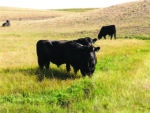
Pasture Calendars Help Preserve Rangeland
Forages – a diverse group of plants providing both livestock feed and important bio-products – are critical for the success of Western agriculture. That’s why Washington State University’s Dr. Steve Fransen helps develop best pasture management practices to benefit the land, environment, animals, and producers’ bottom lines. “I love going out to the field, pulling […]
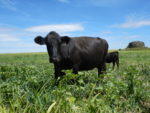
Can Cover-cropping and Grazing Work with Dryland Grain Farming?
Farmers know that planting one crop year after year is asking for trouble. It depletes the soil and leads to increased insect, weed and disease pressures. But in certain places, it’s also been the major agricultural system for decades. In north-central Washington, along the Canadian border, dryland wheat production has been the dominate production system […]

Wireworms in Western Washington
Christine Langley has successfully run Lopez Harvest organic farm on Lopez Island in Washington state’s famed San Juan Islands for more than two decades. But for most of that, she wasn’t fighting wireworms. Those showed up about a dozen years ago, and have made her job a lot harder. “I grow a lot of lettuce […]
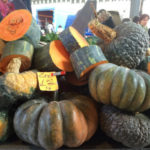
Putting the Winter Back in Winter Squash
For growers, it doesn’t matter how much you harvest. What matters is what you sell! A good example of that came out of Oregon recently, but applies broadly. Growers were having trouble producing and storing a crop they for sale in the winter into the early spring. “We heard from farmers that they weren't making […]
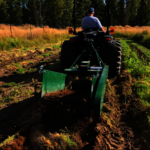
Building Agricultural Capacity in Alaska’s Kenai Peninsula One Row of Potatoes at a Time
The Kenai Peninsula is the fastest-growing agricultural region in Alaska, with the number of farms increasing at nearly three times the rate of the rest of the state. But most of those farms are small – less than five acres – and selling direct to consumers at farmers markets or to local restaurants. The Kenai […]

Regenerative Agriculture – The Next Evolution of Sustainable Farming?
Looking through all the projects funded by Western SARE since 1988, you’ll find 173 with the word “sustainable” in the title, including 11 projects funded in 2019. That’s not surprising. What might be surprising is that same 31-year period, there have been only four projects with “regenerative” in their titles – and all four of […]

Turning the Tide on Overfishing
According to Simon Ellis, director of MERIP Micronesia, over-fishing is depleting natural resources in Micronesia and other parts of the Pacific, creating a clear need to develop alternatives for the economy and food security for fishing communities. Sustainable, capture-based aquaculture and hatchery rearing methods of Rabbitfish hold promise not only for fisheries management and coral […]

IPM for Coffee Berry Borer
When the coffee berry borer arrived in Hawaii 2010, Suzanne Shriner had a hard conversation with her parents. “I sat down with them at the kitchen table and told them we might have to get out of the coffee business,” she remembered. “It was a pretty sober moment, and it wouldn’t have been a good […]
Growers Learn Pheromone-Based Monitoring
Growers are turning to Integrated Pest Management (IPM) tools in order to reduce the use of pesticides on their farm. Pheromone-based monitoring is one such technique used to manipulate the behavior of insect pests. It is a practice that could work well in the Northern Plains; however, according to Dr. Gadi V.P. Reddy of Montana […]
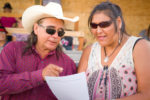
Building Internal Capacity for the Blackfeet Tribe Agricultural Resource Management Plan
The Blackfeet Tribe, according to Loren BirdRattler, faces exciting and challenging times in terms of achieving food sovereignty through sustainable agriculture practices. An important undertaking in progress – the Blackfeet Agricultural Resource Management Plan (ARMP) – will change agricultural practices on the Blackfeet Reservation for many years to come, as well as the economic futures […]

Pueo are Much More than Pest-Management
If you can encourage a threatened native species, help control non-native pests, benefit the state’s farmers and preserve a culturally important icon, you’ve hit an ecological grand slam. That’s exactly what the University of Hawaii’s Melissa Price is trying to do with the islands’ pueo owls. The striking, dark birds are a species of short-eared, […]
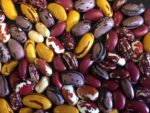
Students Breeds Beans for Organic Farming
Graduate students at the University of California, Davis, have begun field tests on very rare commodities: high-yield, disease-resistant bean varieties that can thrive on organic farms. “Most crops—about 95 percent—have been bred for conventional farming and can be difficult to grow in organic systems,” said Travis Parker, a Ph.D. student in plant biology who is […]

Reducing Medusahead and Preparing the Land for Restoration
"Ranchers are hurting." That one thought is why Kip Panter, Research Animal Scientist at the USDA-ARS in Utah, is passionate about the collaborative work he, other Utah-based researchers, extension professionals, and ranchers have led to restore degraded grasslands. The inspired project team, studying at three ranches, found a “really good economical way to reduce medusahead […]